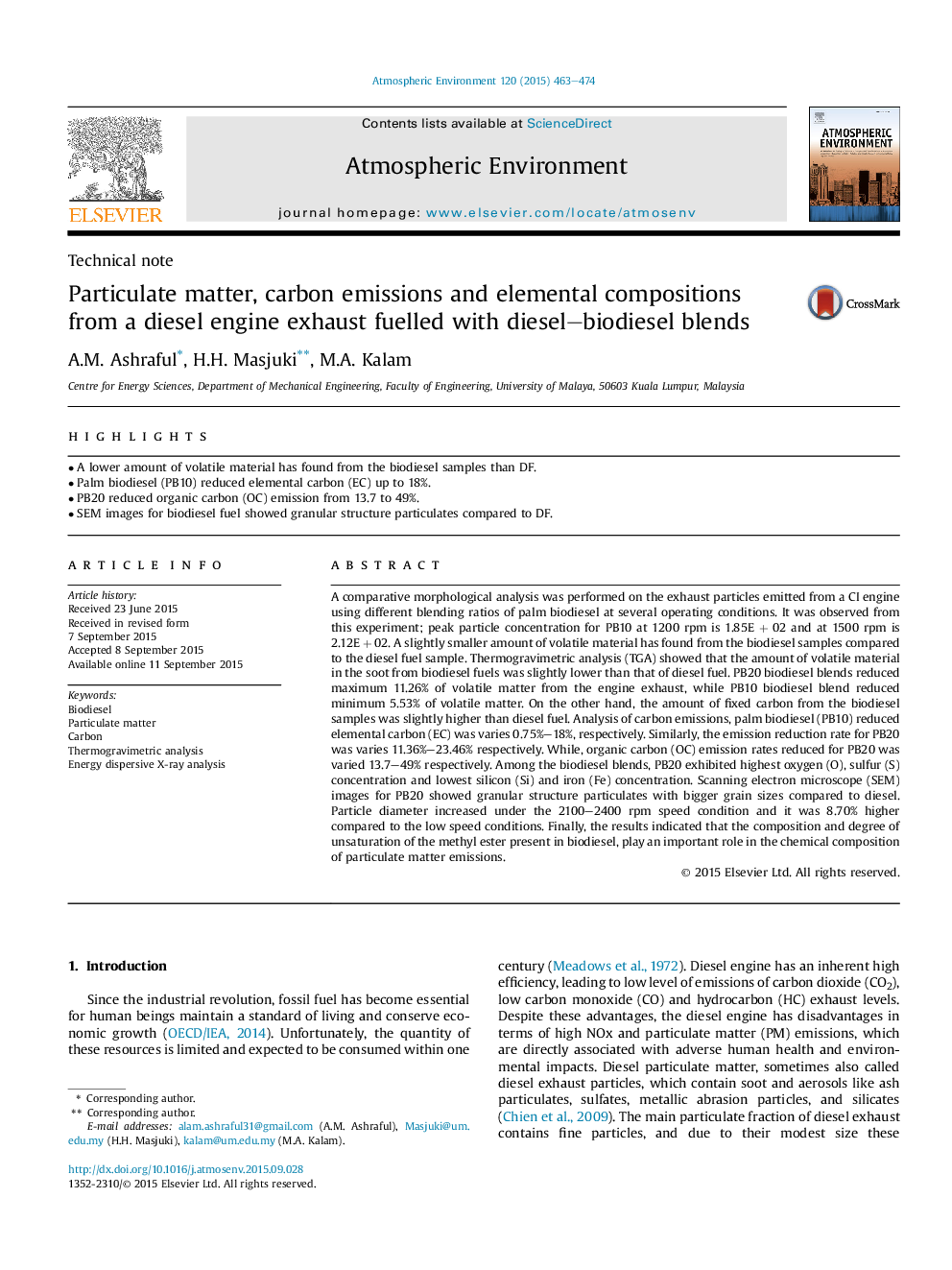| Article ID | Journal | Published Year | Pages | File Type |
|---|---|---|---|---|
| 6337408 | Atmospheric Environment | 2015 | 12 Pages |
Abstract
A comparative morphological analysis was performed on the exhaust particles emitted from a CI engine using different blending ratios of palm biodiesel at several operating conditions. It was observed from this experiment; peak particle concentration for PB10 at 1200Â rpm is 1.85EÂ +Â 02 and at 1500Â rpm is 2.12EÂ +Â 02. A slightly smaller amount of volatile material has found from the biodiesel samples compared to the diesel fuel sample. Thermogravimetric analysis (TGA) showed that the amount of volatile material in the soot from biodiesel fuels was slightly lower than that of diesel fuel. PB20 biodiesel blends reduced maximum 11.26% of volatile matter from the engine exhaust, while PB10 biodiesel blend reduced minimum 5.53% of volatile matter. On the other hand, the amount of fixed carbon from the biodiesel samples was slightly higher than diesel fuel. Analysis of carbon emissions, palm biodiesel (PB10) reduced elemental carbon (EC) was varies 0.75%-18%, respectively. Similarly, the emission reduction rate for PB20 was varies 11.36%-23.46% respectively. While, organic carbon (OC) emission rates reduced for PB20 was varied 13.7-49% respectively. Among the biodiesel blends, PB20 exhibited highest oxygen (O), sulfur (S) concentration and lowest silicon (Si) and iron (Fe) concentration. Scanning electron microscope (SEM) images for PB20 showed granular structure particulates with bigger grain sizes compared to diesel. Particle diameter increased under the 2100-2400Â rpm speed condition and it was 8.70% higher compared to the low speed conditions. Finally, the results indicated that the composition and degree of unsaturation of the methyl ester present in biodiesel, play an important role in the chemical composition of particulate matter emissions.
Keywords
Related Topics
Physical Sciences and Engineering
Earth and Planetary Sciences
Atmospheric Science
Authors
A.M. Ashraful, H.H. Masjuki, M.A. Kalam,
